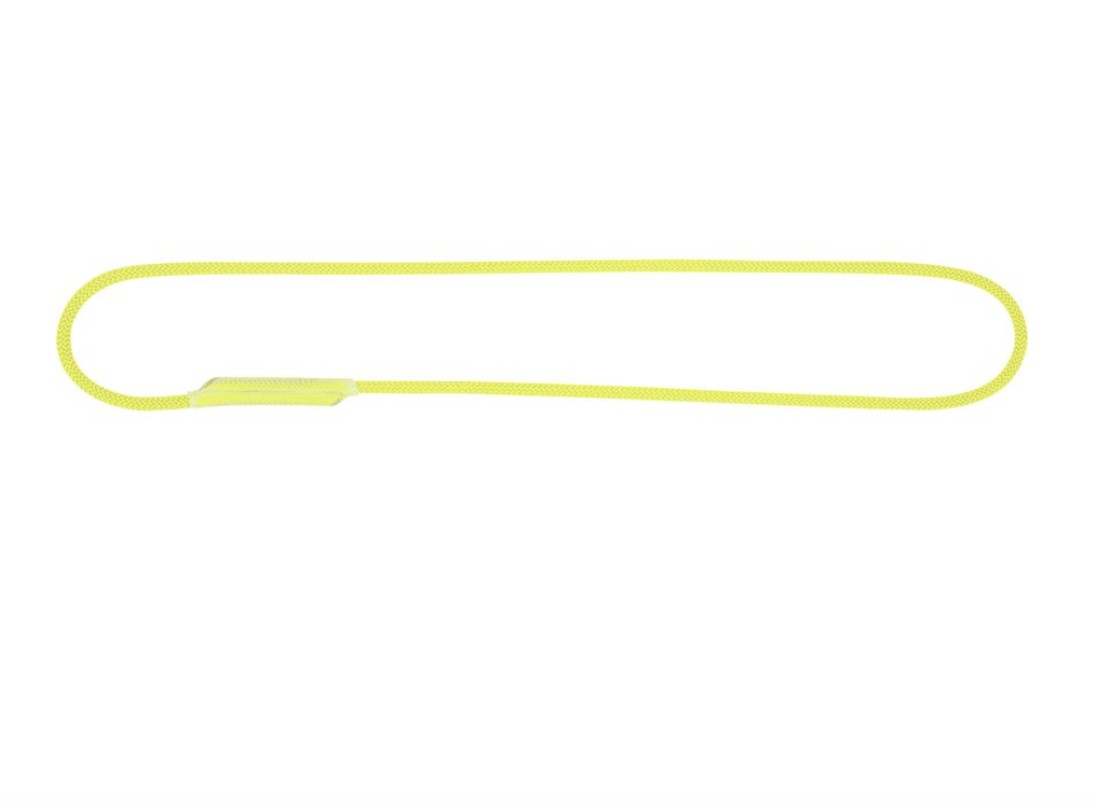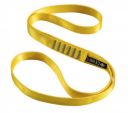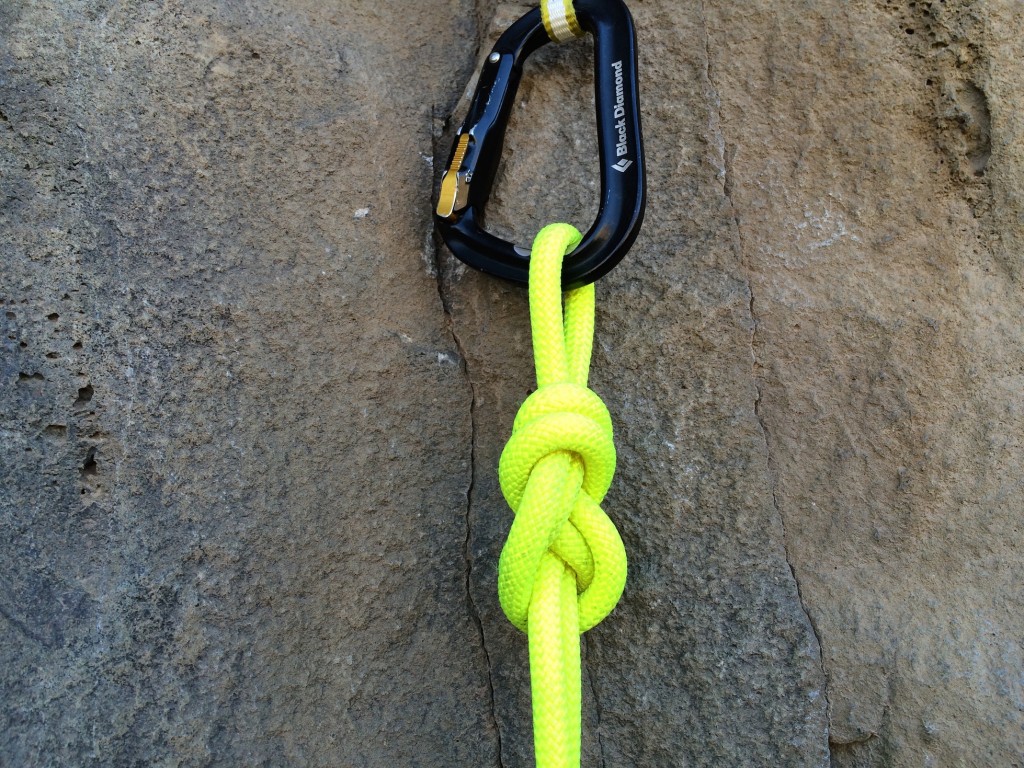Beal Dynamic Sling Review
Our Verdict
Compare to Similar Products
 This Product
Beal Dynamic Sling | |||||
|---|---|---|---|---|---|
| Awards | Best for Clipping Into a Belay | Best Overall Climbing Sling | Best for Building Anchors | Best Bang for the Buck | |
| Price | $12.95 at Backcountry Compare at 2 sellers | $10.00 List $9.95 at REI | $8.95 at REI Compare at 2 sellers | $13.00 List $10.95 at Amazon | $6.95 at REI Compare at 3 sellers |
Overall Score  |
|||||
| Star Rating | |||||
| Bottom Line | While not the smallest or lightest, has the notable advantage of great dynamic elongation | Our Editors’ Choice winner because it is lighter and more compact than any other without compromising performance | One of the highest value options that we tested | A good sling that excels when it comes to equalizing multiple pieces of protection | A small trade-off in performance for a relatively large savings in cost when considering buying a whole rack |
| Rating Categories | Beal Dynamic Sling | Mammut Contact Dyneema | Black Diamond Dynex... | Metolius Open Loop... | Black Diamond Nylon... |
| Handle (25%) | |||||
| Knot Test (25%) | |||||
| Alpine Quickdraw Test (20%) | |||||
| Weight (15%) | |||||
| Bulk (15%) | |||||
| Specs | Beal Dynamic Sling | Mammut Contact Dyneema | Black Diamond Dynex... | Metolius Open Loop... | Black Diamond Nylon... |
| Type of Fiber | Dynamic Rope | Dyneema | Dynex | Dyneema/Nylon weave | Nylon |
| Measured weight | 78g | 19g | 20g | 47g (22g for 60cm) | 37g |
| Width Tested | 8.3mm | 8mm | 10mm | 11mm | 18mm |
| Length Tested | 60cm | 60cm | 60cm | 120cm | 60cm |
| Strength | 22kN | 22Kn | 22Kn | 22Kn | 22Kn |
| Widths Available | 8.3mm | 8mm | 10mm | 11mm; 13mm; 18mm | 18mm |
| Lengths Available | 60cm; 120cm; 150cm | 60cm; 120cm | 30cm; 60cm; 120cm; 240cm | 25cm; 60cm; 120cm; 240cm; 480cm | 30cm; 60cm; 120cm; 240cm |
Our Analysis and Test Results
The Beal Dynamic Sling, as it is most often named in the US, or also known as the Dynaloop, as listed on Beal's website, is made out of a sewn 8.3mm loop of climbing rope. It comes in lengths of 60cm (double length), 120cm (quadruple length), and 150cm. We tested the double-length 60cm version and found that it was perfect for girth hitching through our belay loop and clipping into an anchor point with a locking carabiner. As the video linked in Our Verdict shows, it is only appropriate to use Dyneema slings in a static manner, or with part of the climbing rope involved in the anchor, or you risk breaking the sling in even a very short fall. If you were to clip in direct to an anchor using a sling, as most climbers do while rappelling, or at a multi-pitch anchor, and then somehow take a fall onto this sling (stranger things have happened), you quite literally risk breaking that sling unless it has the ability to dynamically stretch, a very sobering thought. Tying directly into the master point of an anchor with the rope is an easy way to alleviate this concern, but if for any number of reasons this isn't possible, clipping in with a dynamic sling, or PAS(Personal Anchor System), such as the Beal Dynamic Sling, is highly recommended.
The 60cm sling that we tested landed at the bottom of our comparative scoring because it is the heaviest and bulkiest sling in the review, and also doesn't allow for tripling up into alpine quickdraws. This shouldn't dissuade one from buying one, however, as its intended purpose is invaluable. The double-length version is versatile enough to be used as a runner while on lead as well, you have to carry it over the shoulder when not in use. The longer versions are designed for building equalized anchors with dynamic properties, but we surmise that the bulk of the 8.3mm cord compared to other options will be a bit prohibitive. Using a thinner and less bulky cordalette, or a sling made of dyneema, for building an anchor is probably a more efficient option.
Performance Comparison
Handle
The Dynamic Sling feels a lot like a piece of climbing rope, and is not nearly as smooth or soft, or supple, as most of the other slings in this review. While it is far more flexible and supple than the Edelrid Aramid Cord Sling, that isn't saying much, because the Aramid Cord is designed on purpose to be very stiff. Compared to a climbing rope, this sling is not soft and squishy, but rather firm and tight.
The sheath is tightly woven like all ropes, and has the notable advantage of providing an extra layer of protection to the core, which is where the true weight bearing fibers are found. For this reason, this sling is likely far more durable than much thinner slings, and makes a good choice for using as protection around horns or flakes. Overall, it is a bit more unwieldy than we expect of a normal climbing sling, and so we rated it low compared to the competition when assessing for its handle.
Knot Test
When tying knots in this cord, expect it to feel pretty much exactly like a stiff rope. To tie and untie a clove hitch is not problem, but when tying a figure-eight on a bight, we found the cord to be a bit stiff, ensuring that it didn't want to automatically cinch down super tight. Tying this knot also uses up a large percentage of the cord, drastically shortening its length.
When attempting to untie the weighted knots, we found that in general they didn't tighten down as much as the small diameter sling material did, and so were easier to untie. However, for whatever reason, we found the smaller 6mm cord of the Edelrid Aramid Cord Sling to be even easier to untie.
Alpine Quickdraw Test
We shouldn't claim that this sling cannot be tripled up into an alpine quickdraw, because our testing shows that it can. However, it is problematic enough as to be completely ineffective, and so we don't recommend even trying. The cord is too thick to force through small carabiners, and when tripled up, it simply doesn't sit well and loops all over the place. We wouldn't want to clip the rope into a draw tripled up like this.
A better way to carry it is simply over the shoulder as you climb. If you have no intention of using it while on lead, and want to carry it on the harness, simply tying a figure eight knot in the middle and clipping both ends to a carabiner hanging from the harness will allow it to be short enough that it won't dangle in the way.
Weight
We weighed our 60cm sling at 78g, which is nearly twice as heavy as the next closest competitor.
At 8.3mm thick, this should come as no surprise. While you can use this as pro or for extending pro while on lead, the real use is clipping into anchors, so the heavy weight should not dissuade you from owning and carrying one.
Bulk
It should come as no surprise that this is also far and away the bulkiest sling of those that we tested.
Not only is it relatively fat, but its stiffness also doesn't allow it to be stuffed super small, and it doesn't sit tidy on the harness. Furthermore, the area of stitching where the two ends of the sling are sewn together is double fat, with a thermo-molded plastic sheath covering it. This sheath likes to get hung up while sliding through carabiners.
Value
For climbing slings, this one is on the more expensive end of the spectrum. That said, it really isn't very pricey. Since we recommend only needing one, the added cost should not come as much of a burden, and for the added security it provides, we think it presents solid value.
Conclusion
The Beal Dynamic Sling is made out of a loop of sewn climbing rope, in stark contrast to the majority of slings which are sewn flat or tubular webbing. It is our Top Pick for Clipping into Anchors because it allows for dynamic elongation, whereas Dyneema slings do not, and Nylon slings elongate much less. This ability to stretch means they can absorb far more forces than their counterparts, which is critical when you are relying on only one piece of equipment, like when you are clipped into a belay or rappel station. While we see no need for multiples, having one dynamic sling such as this one to use as a PAS or for clipping in short can greatly enhance the security against unforeseen events.


















